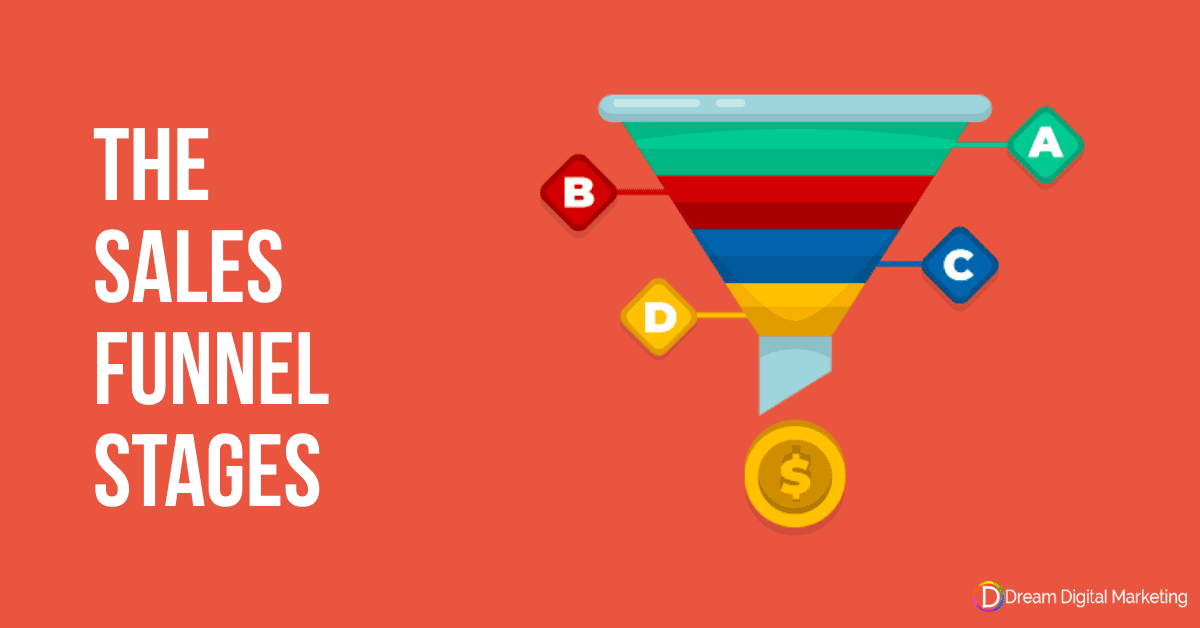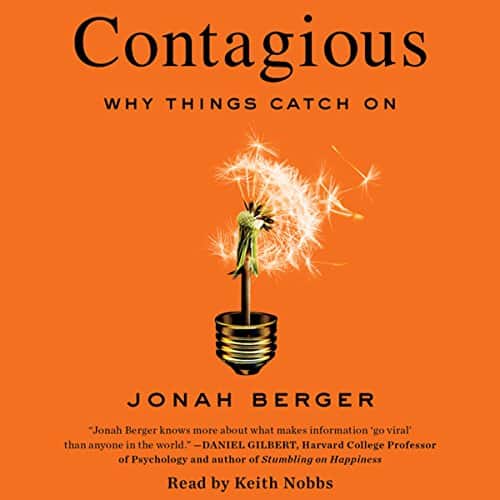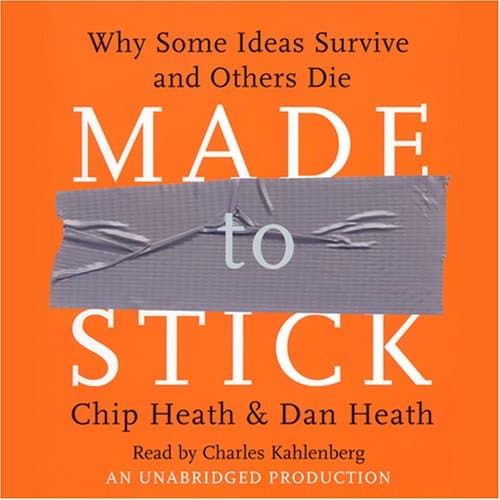Understanding the Sales Funnel Stages is the first step in crafting a winning Sales Funnel and maximizing your revenue.
By understanding the Sales Funnel Stages, you’ll learn how to generate:
- More brand awareness
- More leads
- More sales
- More referrals
Sales Funnel Stages, also known as: Sales Funnel Marketing Stages, Purchase Funnel Stages, Customer Funnel Stages, Marketing Funnel Stages, Conversion Funnel Stages, Customer Decision Journey, or Customer Journey.
Jump to Content
How do the Sales Funnel Stages actually Work?
The Sales Funnel Stages is a model that describes the customer journey toward the purchase of a good or service
It is the process that people go through to become your customer.
For example, before anyone gives you their credit card, they have to know that your organization exists.
Clearly, there are several steps between knowing your product exists and entering their credit card info on your website.
Those steps are the Sales Funnel Stages.
You need to differentiate between Sales Funnel Stages…
Because you would not sell to a potential customer, the same as you would a frequent customer.
What are the Sales Funnel Stages?
Now, I’ll explain each of the stages and how they work.
First off, we have 3 distinct sections of the funnel. Creatively named: Top of Funnel (ToFu), Middle of Funnel (MoFu), Bottom of Funnel (BoFu).
Top of Funnel (ToFu)
The Top of Funnel (TOFU) is the first section of your customers’ purchase process.
It includes those who are in your defined target market but have not become leads or purchased your goods and services.
It consists of the Awareness Stage.
Awareness Stage
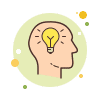
The first stage in our client journey is the Awareness Stage.
In the Awareness Stage, your target market (or target audience) is unaware of their problem, the solution, your business, and your goods/services.
At this stage, your goal is to generate awareness for:
- The problem solved by your goods/services
- The solution provided by your goods/services
- Your good and service offerings
How do I Generate Awareness?
Publishing
Craft a simple, clear, and compelling marketing messages and place it where your ideal client “hangs out”.
You are trying to capture your potential customer’s attention by publishing valuable and relevant content via:
- Social Media Marketing – Use your social media properties to post content.
- Display Ads – Run display ads using Facebook, Instagram, Twitter, and the Google Display Network (includes YouTube ads).
- Blogging / SEO – Create a blog, optimize it for SEO, and write articles. This will let your articles appear at the top of search results.
Engagement
Ask your audience to like, comment, and subscribe to your content.
Think of publishing and engaging as a 1-to-many conversation.
This conversation builds a relationship with your audience as they get to know, like and trust you.
Any commitment from your audience in the form of attention, time and effort is engagement.
Your content should be relevant and valuable to your followers, otherwise, your followers will not be motivated to engage.
Interest Stage
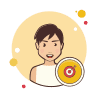
People in the Interest Stage, are interested in changing their current situation.
This is their “problem”
Problem:
- not enough revenue
- costs are too high
- they’re underweight
- they’re overweight
And they are interested in an ideal outcome:
- more revenue
- lower costs
- gain weight
- lose weight
Interest in your company is a result of generating awareness.
Whoever saw your marketing message from your efforts in the Awareness Stage, will now have your brand in mind.
So now it’s time to capture their interest.
How do I Capture Interest?
Subscription
You capture people’s interest by asking them to subscribe.
You ask for their contact information (typically an email address) in exchange for a Lead Magnet.
A Lead Magnet is a valuable piece of content (usually a download).
Here are some popular types of Lead Magnets:
- How-to Guide
- Case Study
- Checklist
- Resource Guide
- EBook
- Discount code
In exchange for the Lead Magnet, they are opting-in to your email marketing subscription list.
They are now a lead.
You can use email marketing to nurture and engage them through the rest of their buying process.
Middle of Funnel (MoFu)
The Middle of Funnel (MoFu) is the second section of the customer’s buying process.
The Middle of Funnel consists of the Consideration Stage.
People in the Middle of Funnel have subscribed as leads, but have not purchased from you.
Selling will take place in the Middle of Funnel either via automated emails or personal selling.
However…
According to HubSpot “only 25% of leads are legitimate and should advance to sales.”
So if you employ a sales team, it is important to differentiate between a Marketing Qualified Lead and a Sales Qualified Lead.
Passing any unqualified leads to your sales team will result in unproductive use of their time.
So, let’s start by defining an MQL and an SQL.
What Is a Marketing Qualified Lead (MQL)?
A Marketing Qualified Lead refers to a lead that is not willing or able to buy your goods or services.
This can be for any number of reasons, they may not…
- Prioritize the problem
- Understand the solution
- Understand your offerings
Maybe they just wanted the free Lead Magnet.
MQLs are also referred to as Suspects.
You don’t want to forward these leads to your sales team yet.
You want to nurture MQLs with automated marketing emails until they are ready to buy.
What Is a Sales Qualified Lead (SQL)?
A Sales Qualified Lead (SQL) is a lead that has been educated and is qualified as ‘ready to buy’ by the sales team.
SQLs are also referred to as Prospects.
They may have purchased a small-ticket item or engaged with your support staff to ask a sales question.
You should define what qualifies for an MQL and an SQL in your company.
Consideration Stage

The Consideration Stage is the “shopping” stage.
The Consideration Stage is divided into 4 sub-stages.
Education, Research, and Evaluation.
In the Consideration Stage, your goals are to nurture your Marketing Qualified Leads and sell to your Sales Qualified Leads.
Education Stage

First is the Education Stage.
In the Education Stage, the lead has yet to identify the problem.
If they don’t know the problem, they don’t know the solution.
If they don’t know the solution, then they don’t know how your business can possibly give them their desired outcome.
Your leads need to identify the problem.
It’s your goal to educated your leads.
If you help them identify the problem, your offerings will be on their list of possible solutions.
Research Stage
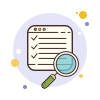
In the Research Stage, the lead has identified the problem but has not found solutions for it yet.
This is when they will search and investigate possible solutions to the problem.
Present your solution to their issue.
Leads may contact support to ask specific questions about what you’re offering.
If they think that your solution is valid, they will add it to their list of possible solutions.
Evaluation Stage
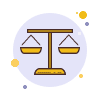
After researching and investigating solutions, your leads will evaluate their options.
They’ll examine their needs, requirements, and compare offers.
They will research products by comparing features, pricing, and reviews.
If you nurtured your leads well, then your product will be included in their evaluation.
Bottom of Funnel (BoFu)
The Bottom of Funnel includes all purchase and post-purchase activities.
That is everything that happens during and after the sale.
People at the Bottom of Funnel includes those who have made the decision to buy from you, current clients, and past clients.
Decision Stage
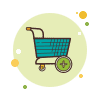
Once the prospect completes their evaluation, the prospect will make a decision to:
- Buy from you
- Buy from a competitor
- Do “nothing” (by returning to a previous stage in the Sales Funnel Stage model)
Their decision will depend on a variety of factors:
- urgency
- budget
- sales message
- product-market fit
If they make the decision to buy from you they’ll proceed to the Purchase (Conversion) Stage.
Your prospects will spend quite a bit of time in the Consideration Stage.
As they research the market, they’ll keep discovering new options and reconsider ones they’ve already found.
You need to keep your leads engaged during the Consideration Stage with your Publishing and Engagement efforts.
Purchase (Conversion) Stage
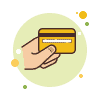
The Purchase Stage is where the actual transaction takes place.
Whether it is via personal sales or an online checkout cart, this is when the lead converts to a customer.
Provide a streamlined frictionless sales transaction process. This means having an online sales experience, where your customers can simply point-and-click to give you money, and they get their merchandise ASAP.
Think Amazon’s 1-Click-Ordering and 2-day delivery (low friction) vs. grocery store (high friction) — get in car, drive, find parking, load cart, wait in line for checkout, load into car, drive.
How to Convert
Make it super easy for them to make that initial purchase.
- Minimize Risk – Reduce risk perception on their part by creating an entry point (low investment) offer.
- Pack on Value – Make them an offer they can’t refuse. My rule of thumb is to give 10X the value for the investment you’re asking.
- Solve Their Most Pressing Issue – The solution should begin to solve their most pressing issue or start them on the path to their ideal outcome.
- Upsells / Downsells – Use an effective check out process with Upsells and Downsells to maximize Average Cart Value, and capitalize on users who are ready to purchase more.
This is where the Classic Sales Funnel models end.
However, if you want to maximize revenue… then the Sales Funnel Stages are just beginning.
Getting the sale is fundamental, but what you do after the sale is crucial because…
Furthermore…

Activation Stage
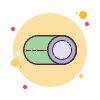
There is an assumption that if your customer buys your product, that they will use it.
This is not the case.
Ask my treadmill. 🥁 Ba-dum tsk!
To make sure that the customer does not refund their order (or worse), you have to “activate’ them.
This is where the Activation Stage comes in…
In the Activation Stage, your goals are to deliver and delight.
Deliver
Simple. Deliver the goods.
Delight
Have them experience an “Aha!” Moment with a quick-win ASAP.
The “Aha!” Moment is a Growth Hacking term for the epiphany-like feeling your users experience when your product relieves their pain or gives them a benefit they cannot do without.
Learn more about the “Aha!” Moment in Hacking Growth by Sean Ellis and Morgan Brown.
Some examples are…
- ManyChat – When you use the Flow Editor to quickly and easily create a Facebook Messenger chatbot.
- ClickFunnels – When you first use its funnel builder and realize how easy it is to build an online sales funnel.
- Active Campaign – When you use the Automation builder to segment and send custom marketing messages automatically.
- Later – Using the scheduler to quickly schedule your Instagram posts.
- Facebook – When your friends start adding you and liking your posts.
What’s your product’s “Aha!” Moment inducing feature?
Find it and use onboarding content to make sure your customers experience it ASAP.
Once the goods are delivered and your customers are delighted, they are now in the Retention Stage.
Retention Stage
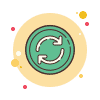
Think of the Retention Stage as a long-term version of the Activation Stage.
Your goals in the Retention Stage are to ensure customer satisfaction and customer success.This will generate customer loyalty.
Satisfaction
To ensure client satisfaction you need to meet, or preferably exceed client expectations.
Expectations have already formed by previous purchases, brand reputation, and marketing.
So ask yourself… What do your customers expect from their purchase? And how can you give it to them?
Success
Provide support and guidance to help your customer be successful with your product.
You need them to be successful, otherwise you will not retain their patronage, and you’ll have to acquire many more customers to grow.
If they succeed they’ll be happy with their purchase, and you’ll have created a loyal customer.
Ascension Stage
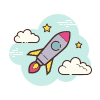
In the Ascension Stage, you ascend your relationship by engaging and providing value, so you can make more offers.
Ask your users to buy more, higher, or more often.
Buy More
Ask your buyers to buy more of the same goods and services.
Buy Higher
Always have a higher-value, higher-profit offer.
Ask your buyers to buy a higher-profit offer that is the next step toward their goal.
This can be a good or service that helps them achieve their goal faster, or easier.
Buy More Often
Package your offer in a subscription format so you can deliver continued value and create a stream of recurring revenue.
Advocacy Stage

If you delivered a great user-experience in the previous stages, your customers will advocate for your organization organically.
Advocating for your business includes word-of-mouth recommendations, reviews, and testimonials.
How to Encourage Brand Advocacy
Encourage social media mentions and reviews and other User-Generated Content (UGC).
Use:
- Giveaways – Reward users who create content related to your brand with giveaways.
- Templates – Distribute templates to help your users generate content.
Example: Fill-in-the-blank testimonial templates. Your client simply fills in the box, and you craft it into a testimonial on the back-end. - Aesthetics – Use Instagram worthy aesthetic packaging and design.
Example: Starbucks. - #hashtags – Use branded hashtags. Ask users to tag their posts, and run a contest for the best post.
- Success Stories – Showcase your client’s success stories on your website and social media.
Although it is not easy, with enough customer advocacy you can even make your brand go viral!
To learn more about making your marketing go viral, listen to Expert Secrets by Russell Brunson, Contagious by Jonah Berger, and Made to Stick by Chip and Dan Heath.
Promotion Stage
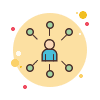
The Promotion Stage does not refer to running a discount or a sale.
This Promotion Stage refers to your users actively selling your brand.
In the Advocacy Stage, users passively and organically promoted your organization via word-of-mouth methods.
However, in the Promotion Stage, users intentionally sell your merchandise in exchange for cash, bonuses, or prizes).
Examples of this are referral, brand ambassador, joint venture, or affiliate programs.
This is an essential growth hack used by virtually all the world’s top companies like Salesforce, HubSpot, Uber, and Dropbox.
You can enable this sales channel by using an official referral, joint venture, or affiliate program.
How to Encourage Promotion
Free Product Rewards
Dropbox and Uber give their promoters more of their product as a reward. Dropbox gives you more storage space. Uber gives you free rides.
Affiliate Programs
An affiliate program is a commission-based system to reward your brand’s promoters.
To set up an affiliate marketing program you need an affiliate management tool like Shareasale.
As your affiliates generate sales for your company, you disburse commissions to them.
Partnerships
Consider establishing referral partnerships with businesses that provide complementary goods or services.
Conclusion
The Sales Funnel Stages describe exactly how someone completely unaware of your brand can turn into someone who sells your brand.
In the Awareness Stage, your ideal market was completely unaware of their problem, solution, your brand, and your offers.By publishing and engaging, you made your audience aware of your business.
Then in the Interest Stage, you started a relationship with your target audience.
As they progressed through the Middle of Funnel…
In the Consideration Stage, you nurtured your lead’s attention as they learned, researched, evaluated buying from you.
In the Decision and Purchase Stage, you provided a frictionless transaction.
In the Activation Stage and Retention Stage, you gave your customers a great experience.
In the Advocacy Stage, you created advocates who enthusiastically tell their friends about your company.
Those who reach the Promotion Stage and join your partnership program to promote your products to others in a win-win-win outcome.
I hope you have gained a better understanding of the Sales Funnel Stages.
It is essential to have a clear online sales process that takes strangers and converts them into customers and beyond predictably.
If you want to launch a Sales Funnel that generates leads and sales for you on auto-pilot 24/7, grab your free Sales Funnel resources to get started!
